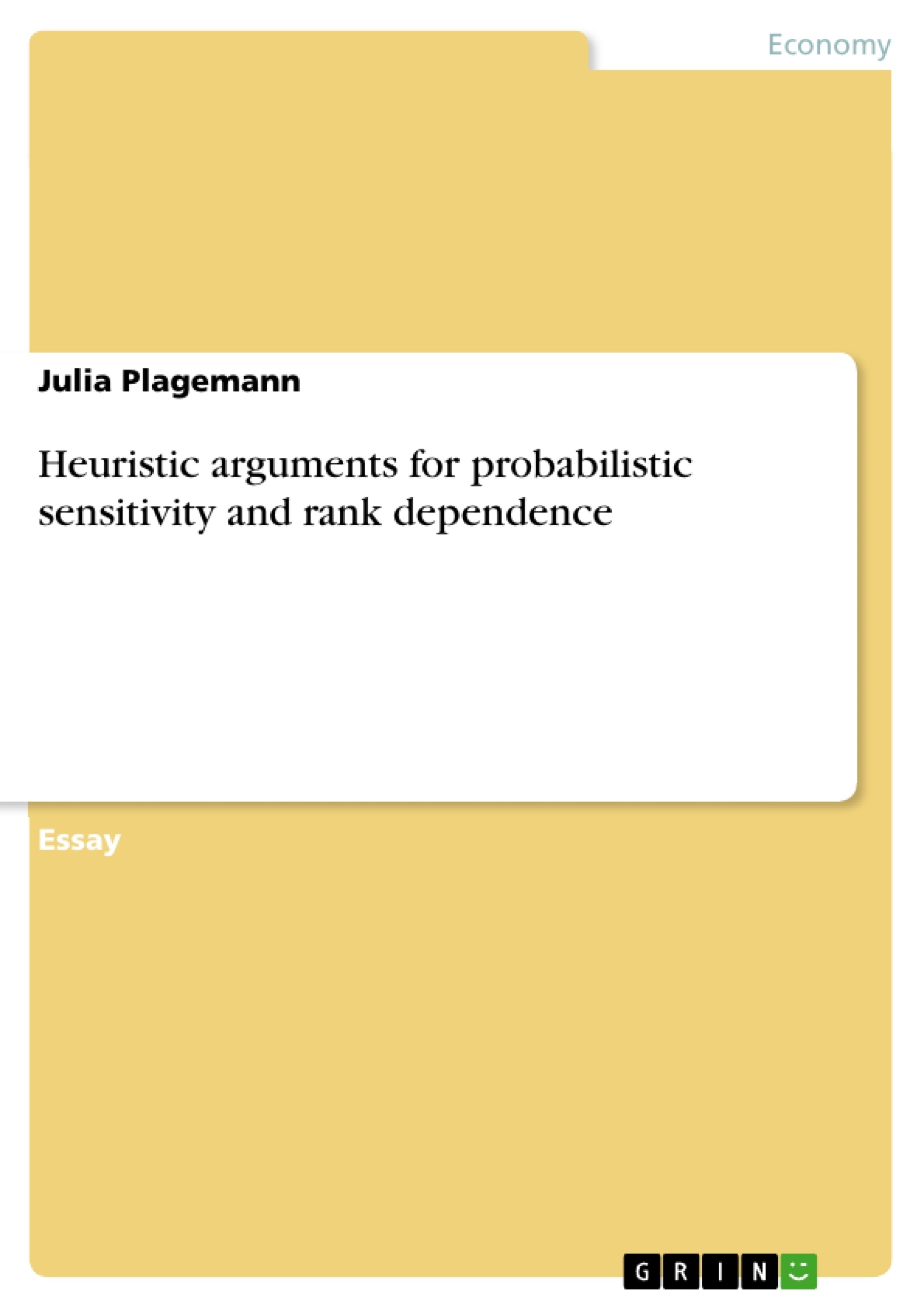I Introduction
In Chapter 5 of his work "Prospect Theory", Wakker (2010) substantially aims to demonstrate the superiority of a rank-dependent utility (meaning a hierarchical sorted utility) over the "old" expected utility theory, which pre-sumes a linearity of utility. The relevant parameters by which the expected utility of its "founders" (von Neumann and Morgenstern (1944) is com-posed, are the utility, which is linked to a decision option, and the probability of occurrence, the likelihood that the decision option will lead to the desired outcome. A decision problem for person 1 between the decision options A and B, therefore, is demonstrated as the choice of probabilities of occurrences, which by Neumann and Morgenstern (1944) were shaped linearly as follows:
D = pA + (1-p)B
Thus the probability after von Neumann and Morgenstern becomes an output-oriented choice between the different option's probabilities. Figure 1 shows the relationship between two options A and B for two randomly chosen distributions as a probability distribution function.
As can be learnt from figure 1, the probability of the choice of option A increases linearly, whereas the corresponding probability for option B can be seen as a directly opposed probability, which decreases to the same degree to which the probability of option A increases. The two options are essentially inversely correlated with one another.
This graphic illustration implies the conviction, that the choice between two options is a choice between equally weighted risks, whereas the one option is chosen, for which the product of risk (probability) and utility is most beneficial. An outcome of 10 (see figure 1) therefore is more likely for option B, while an outcome of 25 is more likely for option A.
Contrary to this assumption of linearity a number of objections were pro-duced, which were also addressed by Tversky and Kahnemann in their work published in 1986.
In his contributing article, Wakker (2010) aims to identify an intuitive heu-ristic, pointing out that the improvement of identifying risk as a non-linear parameter determined by a rank dependent utility should be made. There-fore he divides Chapter 5 into three different parts:
1) The first part argues that risk aversion is not linear
2) Part two shows, that former suggested psychological solutions in order to do justice to the non-linearity of risk aversion are not sufficient
3) Finally, part three presents the concept of rank dependent utility
Table of Contents
- I Introduction
- II Non-Linearity of Risk Aversion
- III Proposal For a Solution to the Problem of Non-Linearity of Risk Aversion
- IV Rank-Dependent Utility
- V Summary
Objectives and Key Themes
This seminar paper aims to address the issue of non-linearity of risk aversion within the framework of expected utility theory. It explores alternative models that better capture decision-making under risk.
- Non-linearity of risk aversion
- Limitations of Expected Utility Theory
- Rank-dependent utility as a solution
- Probabilistic sensitivity
- Heuristic arguments in decision making
Chapter Summaries
Chapter I: Introduction provides a brief overview of the problem of non-linear risk aversion and introduces the concepts that will be discussed in the paper.
Chapter II: Non-Linearity of Risk Aversion delves into the theoretical inconsistencies arising from assuming linear risk aversion in expected utility theory, highlighting the limitations of this traditional model.
Chapter III: Proposal For a Solution to the Problem of Non-Linearity of Risk Aversion explores potential solutions to the challenges presented in Chapter II, setting the stage for the introduction of a more robust model.
Chapter IV: Rank-Dependent Utility presents the rank-dependent utility model as a superior alternative to expected utility theory, providing a detailed explanation of its mechanics and advantages.
Keywords
Risk aversion, expected utility theory, rank-dependent utility, non-linearity, probabilistic sensitivity, decision making under risk, heuristic arguments.
- Citar trabajo
- Julia Plagemann (Autor), 2011, Heuristic arguments for probabilistic sensitivity and rank dependence , Múnich, GRIN Verlag, https://www.grin.com/document/183122



